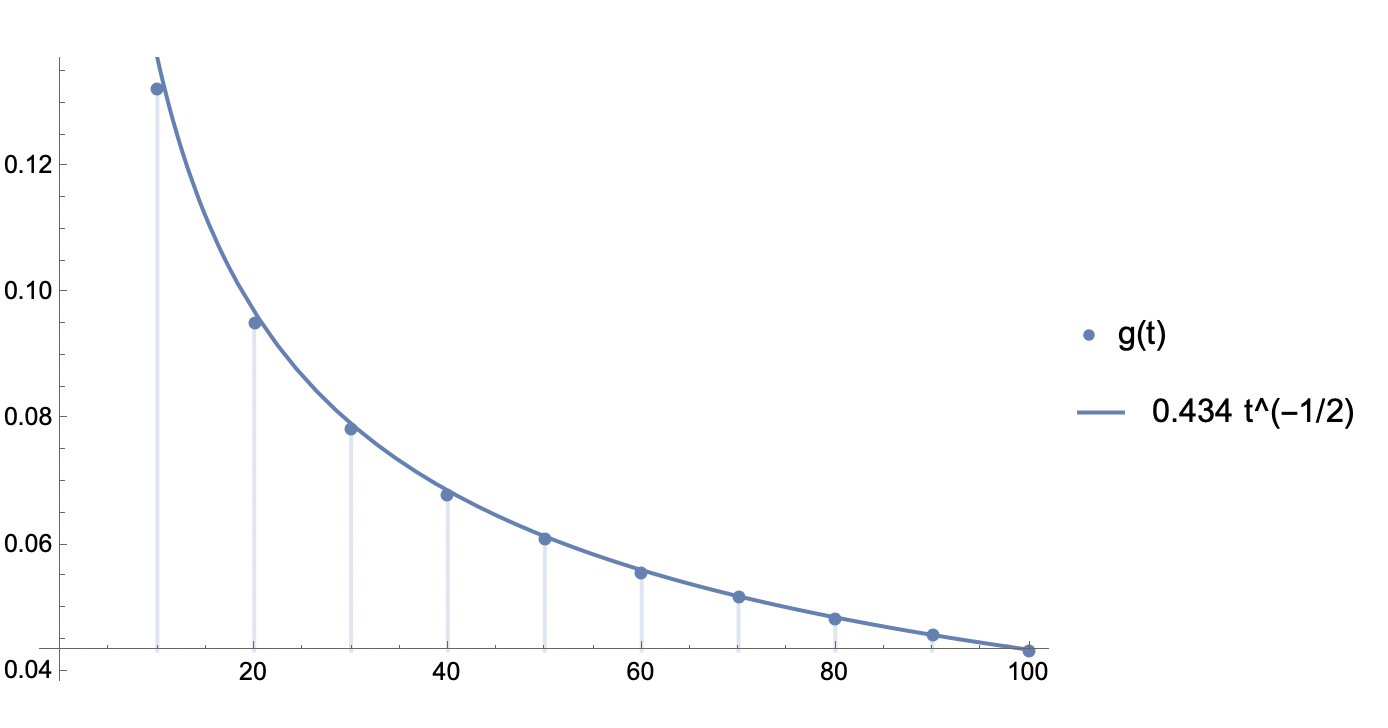Can anyone see how to get a tight upper bound for the function defined in terms of Inverse Laplace Transform below? $$g_\text{sgd}(t)=\mathcal{L}^{-1}\left[\left(\frac{s}{2}+\frac{5 \sqrt{\frac{2}{3}} \sqrt{s}}{2 \tan ^{-1}\left(\frac{\sqrt{\frac{2}{3}}}{\sqrt{s}}\right)}\right)^{-1}\right].$$
Dieter Kadelka's numerical simulation suggests $g_\text{sgd}(t)\approx 0.434 t^{-\frac{1}{2}}$, which appears to model this function very well...where does $O(t^{-\frac{1}{2}})$ form come from?
These function describes loss trajectory for stochastic gradient descent (SGD) on a linear least squares problem with covariance eigenvalues $1,\frac{1}{4},\frac{1}{9},\dotsc$. Expression comes when treating SGD as a continuous time problem which requires solving a particular differential equation

